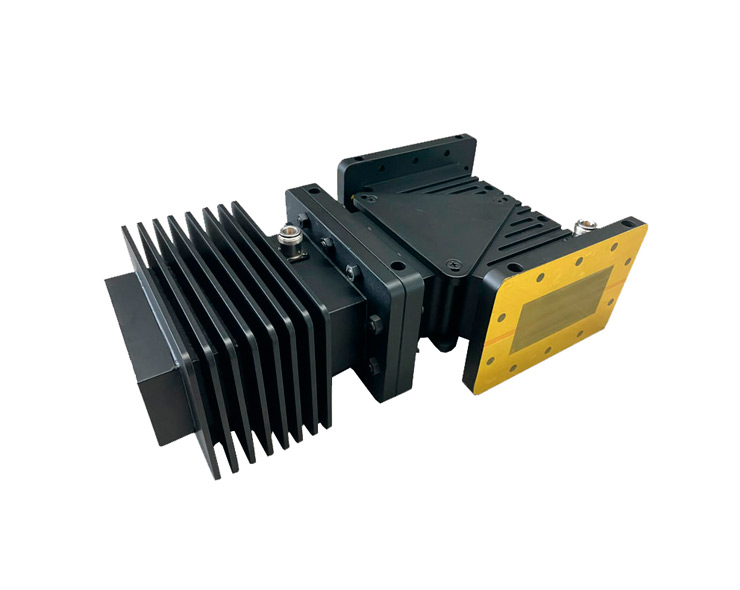Dolph Microwave offers the standard product of Industrial Microwave Isolator for 915 and 2450MHz. Using standard waveguide flange, the product covers a wide frequency band and complete categories. Taking the WR340 (2450MHz) for example.

WR340 Waveguide Isolator | |
Electrical Specifications | |
Model | DH-26WISO2450PPA1000 |
Frequency Range | 2450±20 MHz |
VSWR | 1.2:1 Max. |
Insertion Loss | 0.3 dB Max. |
Isolation | 23 dB |
Average Power | 10 kW |
Flange | FDP26(Cover) / FDM26(Grooved) |
Material | Al |
Cooling Type | Water cooling |
Water Flow | 5-8 L/min |
Water Injection | Quick Connector (ZG1/4"-12*8) |
Surface Coating | Conductive Oxidation |
Temperature Range | -20°C ~ +50°C |
Size | 300*182*95 mm |

Industrial Microwave Isolator is a 2-port device that passes signals in one direction and blocks signals in the other direction. It is used to shield equipment on its input side from conditions on its output side. For example, it prevents the detuning of microwave sources due to load mismatch.
The Industrial Microwave Isolator is a non-reciprocal device with an asymmetric scattering matrix. An ideal Industrial Microwave Isolator transfers all power going into port 1 to port 2 while absorbing all the power going into port 2. To achieve non-reciprocity, the isolator must contain non-reciprocal materials. At microwave frequencies, this material is usually a ferrite biased by a static magnetic field, but can also be a self-biased material. The ferrite is located within the isolator so that the microwave signal presents a rotating magnetic field to it, with the axis of rotation aligned with the direction of the static bias field. The behavior of ferrites depends on the direction of rotation relative to the bias field and is therefore different for microwave signals propagating in the opposite direction. Depending on the specific operating conditions, signals propagating in one direction may be phase-shifted, removed from the ferrite, or absorbed.
More industrial microwave components may interest you